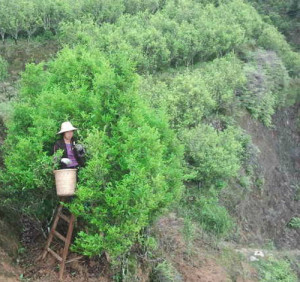
Feng Huang Dan Cong is the name of a extraordinary oolong originating from the mountains around the town of Fenghuang. The Pheonix mountains, how this mountainous area near Fenghuang is also called, covers an area of 231.73 km ² and is situated at an altitude between 300 and 1498 meters above sea level. The climate is with an average temperature of 22°C rather mild and the soil rocky with high mineral content. The growing conditions are similar to those of the Wuyi mountains and the tea cultivars used are closely related.
It starts with a seedling
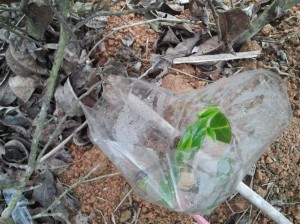
Before any tea can be produced a tea bush needs to be planted first. If there is already a good mother plant usually a clone is taken. This has the advantage that the properties of the growing tea bush are well known. However, this has the drawback that clones are genetically impoverished while tea bushes from seeds can adapt better. In addition, seedlings are good for a surprise. Both, positively or negatively. In Chaozhou is taken rather the middle path by using both methods. However, the exact composition is a well guarded secret of the tea master and is disclosed only to close relatives.
The harvest
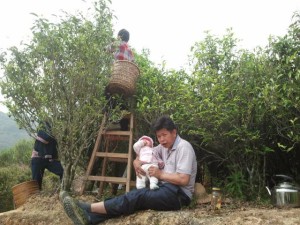
Most tea leaves are harvested in spring because of the superior quality. Later crops do not reach this quality and a repeated harvests also means additional stress for the plants. An optimal time to harvest is a sunny afternoon when the leaves are already free from dew. Usually, between two and up to five leaves are harvested.
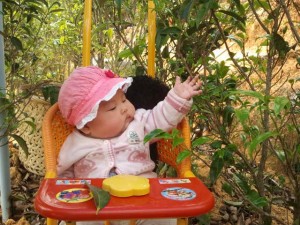
The whole family helps harvest and even relatives from far distant provinces come along and lend a hand. Often, additional tea pickers are hired from the northern provinces to cope with the work load in peak season.
Withering
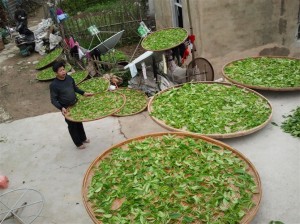
The tea leaves are withered in bamboo trays at about 35°C for 10 to 20 minutes. If it is warm enough this is done under the sun, otherwise indoor. This step has huge influence on the flavor building and must be done carefully. By now, the leaves already release an intense fragrance and let one imagine the potential of the tea.
The slow horse reaches the mill
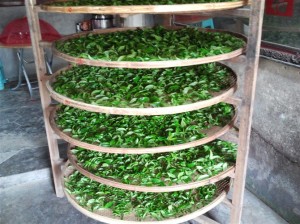
After withering the leaves are stacked in bamboo trays for several hours to cool down and rest. In addition to a space-saving effect this arrangement has the particular advantage that the leaves do not dry too quickly and remain soft. Now the harvest workers have time for a break and a cup of tea.
Oxidation process
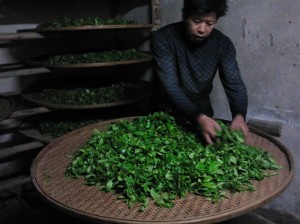
This important step will be made ??by the tea master himself. To initiate the oxidation the leaves are gently kneaded. Thus, to break up the leaves cells what causes the plants juice reacted with the oxygen in the air. Now it’s clear why greatest possible caution is demanded at this step: If the tea master exaggerates this step he will get black tea instead of oolong. The common level of oxidation for oolong is between 20% and 80% while for Dan Cong particularly between 50% and 80%.
Stop oxidation
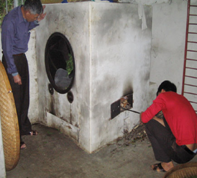
When the desired level of oxidation is reached the oxidation must be stopped. This process is called “kill green”. Everyone one ever made ??applesauce should be familiar with this process: By heating the reactive enzymes are destroyed and thus prevented further oxidation. For Phoenix Dan Cong this is done with charcoal fired ovens at 140 – 160°C. The tea master must do that especially careful because otherwise the tea could get a smoky flavor.The tea leaves are roasted until they become soft. This is important for the next step.
Get tea into shape
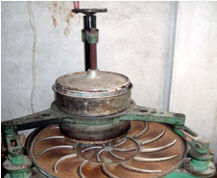
To form the leaves they are rolled mechanically. Probably, previously this process was carried out manually but apart from that Dan Cong is still entirely handmade. Unlike Taiwanese Gao Shan or Anxi Tie Guan Yin, which are rolled into beads, Dan Cong is like Wuyi oolong only slightly twisted.
Primary roasting
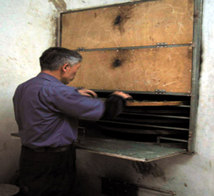
Through primary roasting the tea is dried and develops flavors. Ideally is a temperature of 80 – 90°C for a duration of about 10 minutes. After the tea is again allowed to rest so that it can dry it at low temperature.
Once assess the tea leaves they are ready for the final roasting.
Final roast
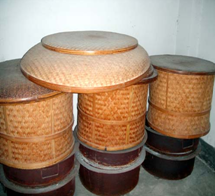
The final roast has significant influence on taste and shelf life. A strong roast benefits a long shelf life and adds toasty aromas to the tea. The roasting temperature mustn’t be too high nor the duration too long because otherwise the tea tastes burnt. This is often the case standard Tie Guan Yin from the supermarket. Sometimes the tea is also much later reroasted in order to improve the shelf life
Search and sort
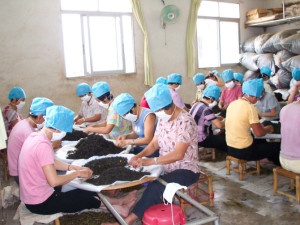
At the very end the tea is checked to remove unsightly leaves and branches and eventually gets sorted. This is still done by laborious manual work. However, the tea pickers seem to like this kind of work as there is a change for chit chat and the place is protected from the sun. A pale skin is in Asia still a desirable goal.
The final product
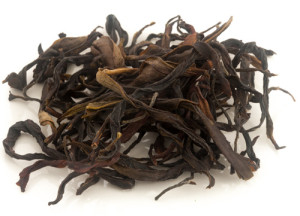
Ideally, one will get a superior Dan Cong: Slightly twisted colorful leaves with a sweet, fruity and flowery aroma. By using the traditional Chaozhou technique countless infusions of consistently high quality are possible.
Update
Feng Huang Dan Cong is now available in our tea shop.

